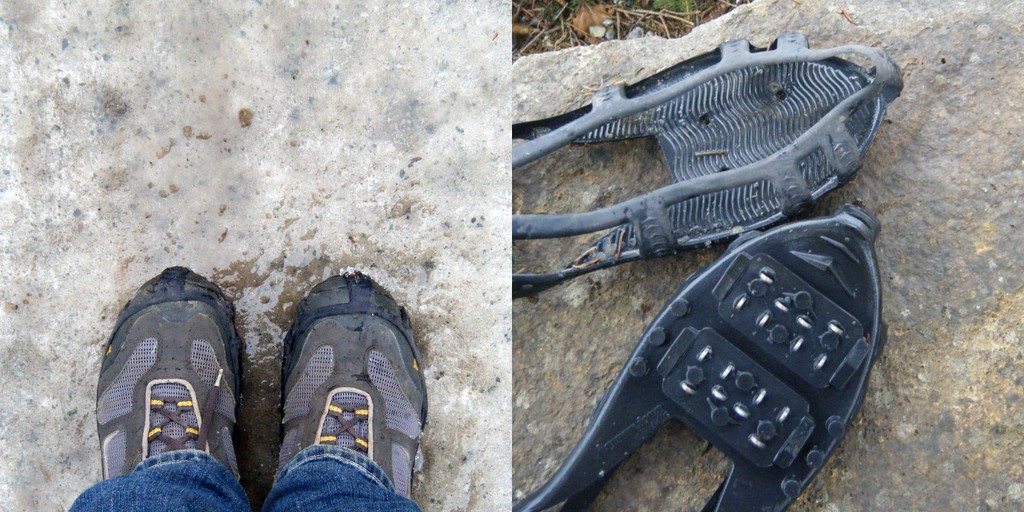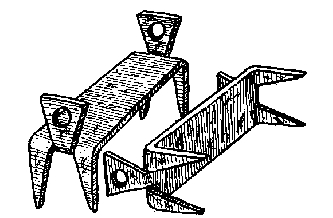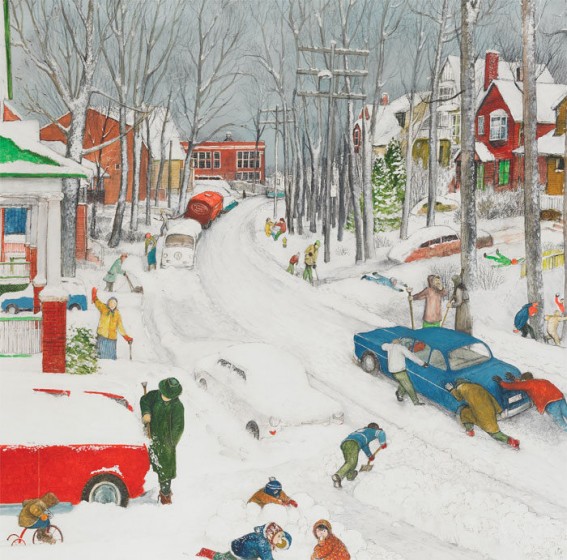Lots of ice underfoot these days and we are constantly reminded to be careful out there. My message is: grow up and wear creepers. I’m talking about the metal cleats or grippers that strap on to your boots – like your own personal studded tires. Old people know, and ice fishermen, and mountain climbers.
The pair I use came from Lee Valley and go on and off easily. Put them in a plastic bag and keep them handy in that stylish messenger satchel you are always carrying.

In the 18th and 19th century iron creepers were common and could be made by a blacksmith. Leather straps held them on your boots just in front of the heel. Four barbs stuck in the ice for traction.

Creepers are often found in archaeological sites and are a favourite “what’s it?” artifact in museums. Apparently 300 creepers have been found in the Louisbourg excavations. Fort Ticonderoga has a short video that shows how they were made and used.
In the past, winter travel often involved walking on frozen rivers and lakes which made creepers an essential boot hack.
Post script
I’m a huge fan of The Diary of Sarah Clinch. Sarah was 18 years old in 1853 when she came from Boston to spent the year in Halifax. She lived with relatives on South Street and offers a generous glimpse into social life at that moment. On Feb 25, 1854 she writes about two of her male friends out on icy Halifax sidewalks:
Heber & Mr. Balfour were out walking together this afternoon and Mr. B. fell down twice. I never knew any one to tumble about as he does and yet he never wears creepers. Perhaps he wants to get accustomed to it. Not falling but to slippery walking. The way he fell down twice coming home from the Diocesan Meeting and Heber says he does not “fall easy” either. Poor fellow!
Nimbus published the diary in 2001 and Meghan Hallett did a brilliant job editing and providing background. Read it. You will thank me.






